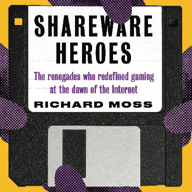They had no right getting or even bidding on the contract from Eidos, but they went for it anyway and pretended they were a larger company. (And then they hired @Gmatom to do the porting grunt work, which she smashed out with awesome improvements.) I talked to the founders about this once; it'll be in the second volume of Secret History of Mac Gaming, if that's ever finished.
And also interesting (though very much unsurprising) to note that they pitched it to Crystal Dynamics and were the driving force behind the project.
https://blog.playstation.com/2024/01/16/tomb-raider-i-iii-remastered-ps4-ps5-features-detailed-new-key-art-revealed/
@CodingItWrong That wiki page covers most of the detail, but to offer a more pithy explanation: it's all semantics, as all 3D games are ultimately rendered as a 2D image, but when people say "real" or "true" 3D they usually mean polygonal 3D, where the maps and all objects are stored and manipulated as 3D coordinates -- including the player, enemies, and camera.
Doom looks 3D thanks to its use of billboarding (for sprites) plus ray casting and binary space partitioning (for walls and floors), but you could render it as a top-down maze and it's mechanically the same game. Marathon uses shearing (sliding and scaling on the y axis) to create an optical illusion that you're looking up and down but is also using tricks to present 2D geometry and logic as though it's 3D.
I didn't check out Aerofoil when I first read about it in @MossRC's book, but now I wish I had. It's an attempt to preserve Glider PRO as unchanged as possible on modern systems. And it's free! If you like old Mac games definitely check it out, even if you also have Glider PRO running on original hardware. https://galeforcegames.itch.io/aerofoil
Video: The origin of Mario like you've never heard it before. Even if you think you know the Donkey Kong story, you don't.
Please share this wherever you can think to, and consider supporting my research on Patreon.
https://www.acriticalhit.com/hidden-influences-mario-how-popeye-game-became-donkey-kong/




Finished another #NerdStitch project, recreating the cover of Richard Moss’ wonderful book, The Secret History of Mac Gaming. Back when he was writing it, I had a fun trip down memory lane talking with him about my years as a Mac game developer, and neat to read stories of all the other game devs. #MacGaming @MossRC
Really enjoying it — beautiful screen, pretty-good keyboard and touchpad, does everything I throw at it with ease (even intense audio editing tasks), light weight for its size, etc. And way cheaper than an Apple laptop with comparable specs.
https://open.spotify.com/episode/47JnPiqbtCdj57HnWDNJ1n?si=3643adc98e59441f&nd=1
As part of their discussions and planning, lead designer Rick Goodman, who had a background in accounting, drafted up a budget costing based on six different sales scenarios — three for each game. These were realistic numbers, but it's interesting to see them in light of the fact that AoE would actually sell a million-plus copies in its *first year alone*.

So in like 10 minutes, my pal Zophar of Zophar’s Domain (@TheRealZophar) has a video going up about the early online video series he worked on in the days of RealPlayer. It was about #Emulation, because of course it was!
I helped script it. I worked on ZD back in the day, 1998 or so. So consider it a professional relationship, continued.
Watch here: https://www.youtube.com/watch?v=WgZfFdPUeAQ
But maybe it is the same thing and I'm splitting hairs by defining them separately. *shrugs*
